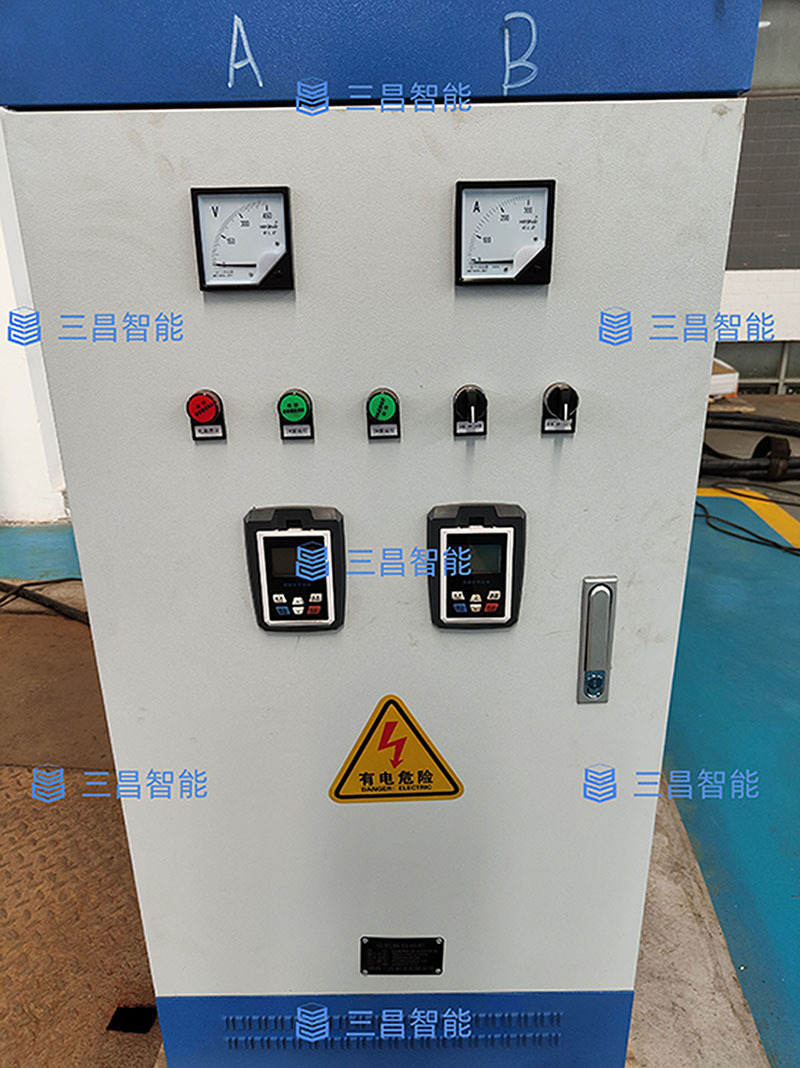Sanchang Intelligent to analyze the difference between complete electrical control cabinets and ordinary cabinets?
Category: Technical Classroom
2025-10-08
In industrial automation and power distribution scenarios, both complete electrical control cabinets and ordinary cabinets are responsible for equipment control and line storage functions, but there are significant differences between the two in design, performance, and applicable scenarios. The following analysis will be conducted from five core dimensions.

1. Different levels of design and integration
The complete set of electrical control cabinets is guided by specific application requirements and adopts an integrated design concept. Its internal components (such as circuit breakers, PLCs, relays, instruments, etc.) have been pre selected, laid out, and wired, and debugged before leaving the factory, and can be directly connected to the system for use. Ordinary cabinets are mostly standardized shells that only provide basic installation space. Internal components need to be purchased, assembled, and wired by users according to their needs, and the integration process requires additional time and technical costs. The difference in design goals between the two determines that complete cabinets focus more on "plug and play", while ordinary cabinets focus more on "flexible adaptation".
2. Different functionality and performance
The complete electrical control cabinet has targeted functional configurations, such as a constant pressure regulation module for water pump control, an overload protection module for motor control, and a communication interface for data monitoring. It can meet the precise control requirements of specific equipment and its operational stability has been systematically tested. The main functions of ordinary cabinets are line storage and basic protection (such as short-circuit protection), lacking customized functional modules, making it difficult to achieve complex control logic. Their performance depends on the user's subsequent component selection and assembly quality, and there is a gap in overall functionality and stability compared to complete cabinets.
3. Different safety and protection standards
In the design and production process of complete electrical control cabinets, industry-specific safety standards (such as GB7251 series standards) must be followed. From the shell protection level (commonly IP54, IP65), insulation performance, grounding design to internal circuit layout, they have been strictly verified and can adapt to complex environments such as humidity, dust, and electromagnetic interference in industrial sites. The safety protection of ordinary cabinets mostly stays at the basic level, with lower protection levels and no unified standard for circuit layout. When used in harsh environments, safety hazards such as short circuits and leakage are prone to occur, and the safety guarantee ability is weaker than that of complete cabinets.
4. Different applicable scenarios and user needs
The complete set of electrical control cabinets is suitable for scenarios with clear requirements for control accuracy and stability, such as industrial production lines, municipal water supply systems, large building power distribution, etc. Users are mostly enterprises or project parties who pursue efficiency and hope to reduce maintenance costs in the later stage. Ordinary cabinets are suitable for scenarios with simple control requirements and mild environmental conditions, such as small equipment single machine control, temporary power supply line storage, etc. Users are mostly individuals or small merchants who have the ability to assemble independently and are more sensitive to cost control. The applicable scenario division of the two is highly matched with the core needs of users.
5. Post maintenance and cost composition are different
The complete electrical control cabinet has high integration of components, standardized wiring, and complete technical documentation. During later maintenance, the staff can quickly locate the fault point, and the replacement parts are mostly standardized modules, resulting in high maintenance efficiency and low long-term maintenance costs. The components of ordinary cabinets come from various sources and there is no unified record of wiring. Troubleshooting requires point by point testing, making maintenance difficult. Additionally, due to the lack of system debugging, compatibility issues with components are prone to occur in the later stages, which increases maintenance costs. The difference in maintenance efficiency and cost between the two mainly stems from different investments in the early design and integration stages.
In summary, the difference between a complete set of electrical control cabinets and ordinary cabinets is essentially the difference between "customized integration" and "basic standardization". When users make choices, they need to make comprehensive judgments based on their own application scenarios, functional requirements, and cost budgets to ensure that the equipment can meet current usage needs and provide guarantees for subsequent operation and maintenance.




